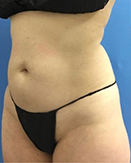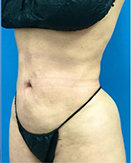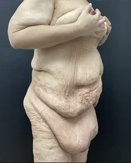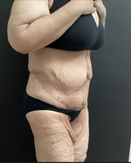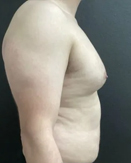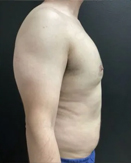Is your protruding belly or tummy pooch bothering you after childbirth?
Well, you certainly aren’t alone. About two-thirds of pregnant women experience diastasis recti, aka the widening of the left and right sides of the abdominal rectus muscles (the “six-pack”) that results in what you may call a “pooch.”
A lot can be misunderstood about diastasis recti and what type of treatments are best to fix it, so keep reading to discover Dr. Lee’s answers to the most commonly asked questions about diastasis recti.
1. What causes diastasis recti?
Diastasis recti occurs when too much pressure is put on the abdominal muscles. And as we hinted at above, pregnancy is the most common cause. However, the condition can affect non-pregnant women and men, too.
Additional causes of diastasis recti include:
- Obesity
- Rapid changes in weight
- Weightlifting
- Certain abdominal exercises
- Genetics
- Aging
- Swelling of the abdomen
2. Can exercising fix diastasis recti?
No amount of exercise can fix excessive separation of the abdominal muscles, and it often requires surgery.
There are exercises out there that may help treat minor separation of the ab muscles. However, these exercises should be performed with caution and, ideally, under the supervision of a physical therapist or trainer as exercises performed incorrectly can cause the abdominal muscles to separate further apart.
Overall, exercises can only help to a certain extent, and they alone will not reattach the separated muscles. If diastasis recti becomes severe and affects your functionality or confidence levels, it may be time to consider surgery.
3. What are the symptoms of diastasis recti?
The most common and visible symptom of diastasis recti is a pooch or bulging stomach that’s more apparent when you strain or contract your abdominal muscles.
Other symptoms include:
- Lower back pain
- Poor posture
- Loose belly skin
- Constipation
- Bloating
4. What should I expect from surgery?
For severe diastasis recti that’s associated with functionality problems and cosmetic concerns, surgery is a recommended route to go when non-invasive treatments aren’t working.
Most women with diastasis recti will will have loose skin when the muscles are tightened. If there is loose skin then it should be removed for best aesthetic results. This would mean having a mini tummy tuck or standard tummy tuck.
Another surgical technique that Dr. Lee is known for doing, which many other cosmetic surgeons to not do, is tighten the oblique muscles. The abdomen often bulges out on the sides because the oblique muscles have separated from the oblique muscles. By tightening the oblique muscles to the midline, the waist narrows and any lateral bulge disappears.
5. How do I know if I’m a suitable candidate for diastasis recti surgery?
If you’re considering diastasis recti pair surgery then we invite you to schedule a consultation with Dr. Lee to determine if you’re a good candidate.
Give our team a call at 956-969-8369 or book an appointment at New Life Cosmetic Surgery and Wellness Center here!
